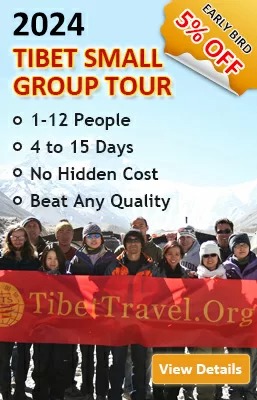
What Type of Sunscreen to Use in Tibet?
At Tibet's average elevation of 4,000 meters, ultraviolet (UV) radiation is at least 2.5 times stronger than at sea level. Here, sunscreen isn't a beauty luxury. On the contrary, it's a critical defense against painful sunburn, snow blindness, and high-altitude dermatitis, which causes red, cracked skin. Even on cloudy days, 80% of UV rays penetrate the atmosphere, making sun protection non-negotiable for anyone exploring Tibet.
Three Non-Negotiable Criteria for Tibet-Ready Sunscreen
SPF 50+ and PA++++: SPF measures defense against UVB rays, which cause burns. With Tibet's intense UVB levels, SPF 50+ blocks about 98% of these rays. PA (Protection Grade of UVA) uses "+" to indicate UVA protection; PA++++ shields against 98% of UVA, the rays that age skin and penetrate deeper, increasing long-term damage risk.

Broad-Spectrum Coverage: Look for labels like "Broad Spectrum" or "UVA/UVB Protection." Tibet's thin atmosphere filters less UV, exposing you to both ray types—UVB burns the surface, while UVA damages cells beneath. Dual protection ensures comprehensive defense.
Waterproof, Sweat-Resistant, and Rub-Proof: Trekking, horseback riding, or even brisk walking in Tibet's dry air will make you sweat. A waterproof formula resists moisture from sweat or sudden rain, while rub-proof properties prevent it from wiping off on hats, scarves, or backpack straps—keeping protection intact during long days outdoors.
Choosing the Right Form: Creams, Sticks, and Sprays
Tubed Creams: Ideal for faces and necks, their thick texture adheres well to skin, allowing precise application on sensitive areas like cheeks and the nape. Many are infused with moisturizers, a bonus in Tibet's arid climate.
Sunscreen Sticks: Solid and mess-free, they're perfect for travel—no risk of leaks in luggage, and easy to carry through airport security. Their compact size makes them great for touch-ups on hands, ears, and around the hairline.
Sunscreen Sprays: Proceed with caution. Tibet's strong winds can blow the mist away from your skin and into your lungs, irritating airways. They're also tricky to apply evenly in gusty conditions and often get flagged in security checks.

Physical Sunscreen: Best for High-Altitude Conditions
Prioritize physical (mineral) sunscreen or hybrid formulas. Physical sunscreens reflect UV rays immediately—no waiting for absorption. They're gentler on skin dried out by Tibet's low humidity, making them ideal for sensitive types. Hybrid versions combine physical blockers with mild chemical filters, offering the stability of minerals plus lighter texture. If opting for chemical sunscreens, choose fragrance-free options and reapply more frequently.
Boost Protection with "Hard" Sun Gear
Sunscreen works best alongside physical barriers. A wide-brimmed hat shades your face, neck, and ears, which is critical for preventing burns on areas sunscreen might miss. UV400-rated sunglasses block 99-100% of UVA/UVB, shielding eyes from snow glare that causes snow blindness. For windy days or motorcycle rides, a breathable sun mask covers your nose, cheeks, and chin, doubling as a windbreak to prevent chapping while locking in sunscreen.

Conclusion
Reapply sunscreen every two hours when outdoors, and even sooner if you are sweating heavily or wiping your skin. Indoors, a 4-hour reapplication window suffices. Never skip it on cloudy days: as mentioned, UV rays penetrate cloud cover easily here.





35 Comment ON "What Type of Sunscreen to Use in Tibet?"
Asked by Liliana Me** from Macau
plan a 7-8days trip for me and my boyfriend in April
Hi! I would like to plan a 7-8days trip for me and my boyfriend in April (3rd to 10th ideally) to Nepal, Tibet, and, if possible, Bhutan. Do you think it would be doable? Based on what I read, there are some places/things to do to consider: Nepal: Everest Base Camp trek and the Annapurna Circuit, ancient temples, sacred sites like Lumbini, Kathmandu, Tibet: The Potala Palace in Lhasa and the Jokhang Temple. eventually the holy Mount Kailash or the high-altitude plains. Bhutan: Thimphu, Paro, and the famous Tiger’s Nest Monastery. To take part in cultural traditions, yoga, meditation... Of course I am open to any recommendations you could make. For your reference, we are both based in Asia: him, in Bangkok and myself in Macau. Thank you so much for the information you could provide and, if possible, an estimated budget for your offer.
Asked by Ke** from Singapore
Cycling Tour to Mt Kailash
Hi , we are planning a Cycling Trip once Tibet opens for Tourism. The plan is we shall arrive to Kathmandu , travel to the border and enter via Kerung. Can you pls send a day to day Itinerary starting from Kerung - Lake Manasarovar - Darchen - Asthapath. We shall go around Kailash on foot and resume Cycling back to Kerung. We are a Group of 6-8 persons. Thanks Pls send ur reply to Kevin
Asked by Debo** from USA
Please can you tell me the prices and dates for the Tibet Luxury Tour.
Also, could you please provide a detailed itinerary - I want to see how many hours are spent on buses/vehicles. Thank you! Deborah
Asked by S** from HongKong
Tibet Tour from HK
May I know if holding Mainland Travel Permit for HK Residents. is it also need to get the visa permit to Tibet and what is the procedure if need to apply? Thank you
Asked by Na** from USA
Is Kailash Mansarovar Trip open for Indian Passport Holder?
Is it open for Indian Passport Holder?
Asked by A** from Singapore
Enquiry on private tour
We are planning a trip from Hong Kong to Tibet during the 12th to 21st of April. We want a private tour that covers all the scenic places as well as the EBC. Please advise an itinerary along with the cost breakdown. Thanks.
Asked by Na** from Canada
We would like to take the train from Xining to Lhasa
Asked by Gr** from Canada
The "Tibet Entry Permit" should be apply
Asked by Tam** from Singapore
Sightseeing Potala Palace
Asked by Ka** from Singapore
plan to travel to Mount Kailash